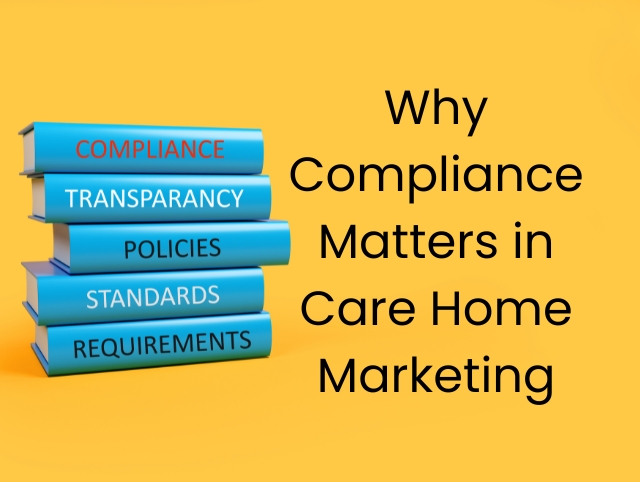
Digital Care: How Website Design Drives Care Home Business Success

Key Takeaways
-
- User-friendly design with simple layouts and accessibility features is crucial for care home websites
- Compelling content showcasing services, facilities, and staff builds trust with potential residents and families
- High-quality visuals and virtual tours help showcase the care home environment
- Engagement features like contact forms and appointment booking systems facilitate communication
- SEO optimization improves visibility for local searches and attracts more potential residents
-
Why Care Home Website Design Matters
Ever wondered why some care homes seem to always be full while others struggle to attract residents? Well, lemme tell ya, it ain’t just about the fancy curtains or the chef’s special pudding. In today’s digital world, your website is often the first impression folks get of your care home. And boy, does that first impression count! A well-designed website for a care home isn’t just a pretty face on the internet. It’s a powerful tool that can help you:
- Attract more potential residents and their families
- Build trust and credibility in your community
- Showcase what makes your care home special
- Make it easy for people to get in touch and book visits
Think about it. When families are looking for a care home for their loved ones, where do they start? You guessed it – the good ol’ internet. If your website looks like it was designed back when dial-up was still a thing, you might as well be invisible1.
User-Friendly Design: Keep It Simple, Silly!
Now, I know what you’re thinking. “But I’m not tech-savvy! How am I supposed to create a fancy website?” Well, here’s the secret – it doesn’t need to be fancy. In fact, when it comes to care home websites, simpler is often better. Here’s what you need to focus on:
- Simple Layout: Make your website easy to navigate. No one wants to feel like they’re solving a puzzle just to find out what services you offer4.
- Mobile-Friendly: These days, everyone and their grandma is using smartphones. Make sure your website looks good on all devices1.
- Accessibility: Remember, many of your potential residents or their family members might have visual impairments. Use features like alt text for images and make sure your site can be navigated using just a keyboard1.
Compelling Content: Tell Your Story
Your website ain’t just a digital brochure. It’s a chance to tell your story and show what makes your care home special. Here’s what you should include:
- Clear Information: Don’t make people guess what services you offer. Spell it out in simple, easy-to-understand language1.
- About Us Section: Share your care home’s history and values. People want to know who they’re trusting with their loved ones1.
- Services Offered: Do you offer specialized dementia care? Gourmet meals? Daily activities? Let people know!1
- Facilities Showcase: Use high-quality images or virtual tours to show off your rooms, gardens, and other amenities. Let people imagine themselves or their loved ones living there1.
Building Trust: Show, Don’t Just Tell
In the care home biz, trust is everything. Your website can help you build that trust before someone even steps through your door. Here’s how:
- Real-Life Photography: Don’t just use stock photos. Show real residents (with their permission, of course) enjoying life at your care home4.
- Testimonials: Nothing builds trust like hearing from happy residents and their families. Include genuine testimonials on your website3.
- Certifications: If you’ve got ’em, flaunt ’em! Display any professional affiliations or certifications prominently3.
Engagement Features: Make It Easy to Connect Your website should be more than just an online brochure. It should be a tool for engagement. Here’s what you need:
- Contact Information: Make it super easy for people to get in touch. Put your contact details on every page1.
- Interactive Contact Forms: Some folks prefer to reach out online. Make sure you have user-friendly forms for inquiries3.
- Appointment Booking System: Make it easy for people to schedule visits or consultations3.
- Blog or News Section: Keep your website fresh with regular updates. Share news, tips, or stories about life in your care home3.
Visual Appeal: A Feast for the Eyes
Let’s face it, we all judge a book by its cover sometimes. Make sure your website looks inviting and professional. Here’s how:
- Appropriate Color Scheme: Use colors that evoke comfort and safety. Think warm oranges, calming greens, or soothing blues4.
- High-Quality Visuals: Use engaging images and videos to break up text and make your website more appealing1.
SEO Optimization: Get Found Online
Having a beautiful website is great, but it won’t do you much good if no one can find it. That’s where SEO (Search Engine Optimization) comes in. Here are some tips:
- Location-Specific Content: Create content optimized for local search. This helps you show up when people in your area are looking for care homes5.
- Regular Updates: Keep your website content fresh. This helps with search engine rankings and shows that your care home is actively managed1.
Conclusion: Your Website, Your Success Story
In the end, your care home website is more than just a digital presence – it’s a powerful tool for growth and resident retention. By focusing on user-friendly design, compelling content, trust-building elements, and SEO optimization, you can create a website that not only attracts potential residents but also showcases the unique value of your care home. Remember, in the digital age, your website is often the first impression people get of your care home. Make it count
Frequently Asked Questions
- How often should I update my care home website? It’s a good idea to review and update your website content at least quarterly. However, if you have a blog or news section, aim for more frequent updates – ideally weekly or bi-weekly.
- Do I need to hire a professional to design my care home website? While it’s possible to create a website yourself using platforms like WordPress or Wix, hiring a professional who understands the unique needs of care home websites can be a worthwhile investment.
- How can I make my care home website stand out from competitors? Focus on showcasing what makes your care home unique. This could be your specialized services, your approach to care, or your facilities. Use high-quality images and consider adding virtual tours to give potential residents a real feel for your care home.
- Is it important to include pricing information on my care home website? While you don’t need to list exact prices, providing some general information about your pricing structure can be helpful. Many families use this information in their initial research.
- How can I ensure my care home website is accessible to older adults? Use larger, easy-to-read fonts, ensure there’s good contrast between text and background colors, and make sure all functions can be accessed using a keyboard as well as a mouse. Also, consider adding a text-to-speech option.
Care Home Marketing Disclaimer
Care Home Digital Marketing provides marketing services specifically designed to support care homes with their digital presence, branding, and promotional strategies.
We are marketing specialists, not care providers or healthcare professionals. Nothing on this website, in our content, or within our services should be interpreted as advice or guidance related to the delivery of hands-on care, medical treatment, or clinical practices.
All marketing materials and campaigns created by us are intended solely to enhance visibility, engagement, and communication for care sector businesses.
While we are not involved in the provision of care, we do have personal experience of loved ones living with dementia, as well as those we have sadly lost due to dementia-related illness.
This personal connection drives our deep respect for the care sector and fuels our commitment to helping care homes share their vital work with the world.
For matters relating to the delivery of care, we strongly advise consulting qualified care professionals or relevant regulatory bodies.




